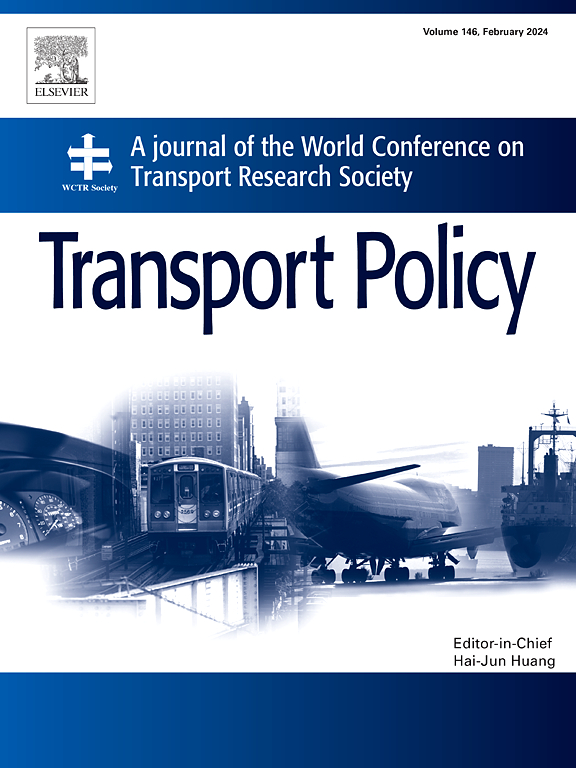Estimating the convoy capacity of restricted waterway: The case of the Suez Canal
IF 6.3
2区 工程技术
Q1 ECONOMICS
引用次数: 0
Abstract
For some restricted waterways such as the Suez Canal, all arriving ships have to form a convoy and pass through the waterway one by one without overtaking for safety reasons. In this study, we first propose a novel concept of convoy capacity that incorporates the standard unit of ship and estimate convoy capacity by considering ship types, ship sequence, and ship headway between two consecutive ships. If ship headway is fixed, convoy capacity is a constant value given that the ship sequence is aligned optimally. By contrast, convoy capacity becomes an uncertain variable under random ship headway and random ship sequence. To characterize the system state where convoy capacity is achieved under fixed ship headway, we first formulate an integer programming model for the optimal ship sequence. Then, we develop simulation procedures and explore the probability distribution of uncertain convoy capacity. We demonstrate the proposed methods through the Automation Identification System (AIS) data collected from the Suez Canal. The results can provide managerial insights on the performance of convoy system and the effective strategy for ship traffic control.
求助全文
约1分钟内获得全文
求助全文
来源期刊

Transport Policy
Multiple-
CiteScore
12.10
自引率
10.30%
发文量
282
期刊介绍:
Transport Policy is an international journal aimed at bridging the gap between theory and practice in transport. Its subject areas reflect the concerns of policymakers in government, industry, voluntary organisations and the public at large, providing independent, original and rigorous analysis to understand how policy decisions have been taken, monitor their effects, and suggest how they may be improved. The journal treats the transport sector comprehensively, and in the context of other sectors including energy, housing, industry and planning. All modes are covered: land, sea and air; road and rail; public and private; motorised and non-motorised; passenger and freight.
 求助内容:
求助内容: 应助结果提醒方式:
应助结果提醒方式:


